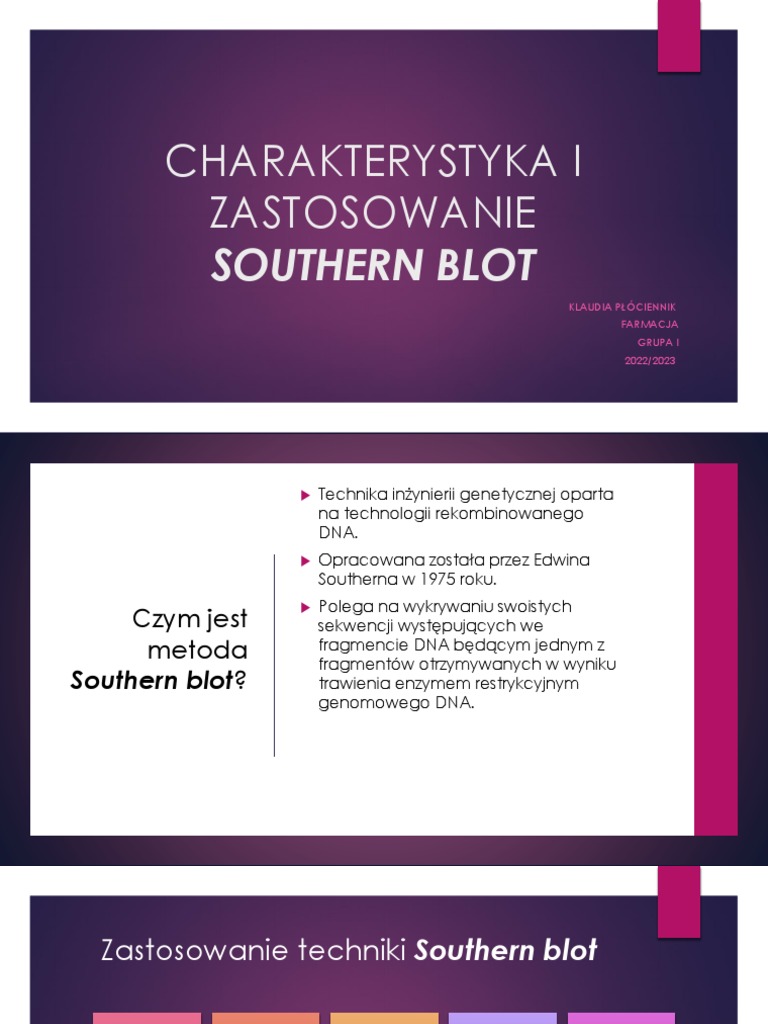The Southern blot, a molecular biology technique conceived by Edwin Southern, is akin to a highly specific fishing expedition for DNA fragments. Instead of casting a line into the ocean, scientists are angling within a complex broth of fragmented genomic material. This method allows for the detection of specific DNA sequences within a heterogeneous sample, proving invaluable across a spectrum of research and diagnostic applications.
Principle of the Southern Blot: Molecular Fingerprinting
At its core, the Southern blot hinges on the principles of nucleic acid hybridization. The procedure begins with the enzymatic digestion of DNA, typically using restriction endonucleases. These molecular scissors cleave the DNA at specific recognition sites, resulting in a diverse population of fragments of varying lengths. These fragments are then separated by size using gel electrophoresis, a process that leverages an electrical field to drive the charged DNA molecules through a porous gel matrix. Smaller fragments migrate more rapidly, creating a size-dependent separation pattern.
The resolved DNA fragments are then transferred from the fragile gel matrix onto a more robust membrane, often composed of nitrocellulose or nylon. This transfer, the “blotting” step, preserves the spatial arrangement of the DNA fragments. Next, the DNA is denatured, typically through alkaline treatment, rendering it single-stranded. Single-stranded DNA is crucial for the subsequent hybridization step.
The membrane is then incubated with a labeled probe. This probe is a single-stranded DNA or RNA fragment complementary to the sequence of interest. The probe is labeled, usually with a radioactive isotope or a fluorescent tag, to enable its detection. During hybridization, the probe seeks out and binds to its complementary sequence on the membrane, forming a stable double-stranded hybrid. Unbound probe is then washed away, leaving only the probe hybridized to its target sequence.
Finally, the hybridized probe is detected. If a radioactive label was used, the membrane is exposed to X-ray film, and the resulting autoradiogram reveals the location of the probe. Fluorescently labeled probes are detected using specialized imaging systems. The intensity of the signal is proportional to the amount of target DNA present in the sample. The position of the band on the blot indicates the size of the fragment containing the target sequence. The Southern blot is therefore a highly precise method for DNA fingerprinting.
Applications Across Scientific Disciplines: A Multifaceted Tool
The Southern blot boasts a diverse range of applications across scientific disciplines. Its utility stems from its ability to specifically detect and quantify DNA sequences, making it a cornerstone technique in several fields.
1. Gene Mapping and Characterization: Navigating the Genome
One of the earliest applications of the Southern blot was in gene mapping. By analyzing the restriction fragment length polymorphisms (RFLPs) within a genome, researchers could construct detailed maps of gene locations. RFLPs are variations in the DNA sequence that affect the size of the fragments produced by restriction enzyme digestion. Southern blotting allows researchers to identify and track these variations, providing valuable insights into the genetic structure of organisms.
Furthermore, the Southern blot is invaluable for characterizing newly discovered genes. It can be used to determine the copy number of a gene, its location within the genome, and its relationship to other genes. This information is essential for understanding the function and regulation of genes.
2. Disease Diagnosis: Identifying Genetic Anomalies
In the realm of medical diagnostics, the Southern blot serves as a powerful tool for detecting genetic mutations and chromosomal abnormalities. For instance, it can be used to diagnose genetic disorders caused by gene deletions, insertions, or translocations. It’s especially useful in detecting large-scale genomic alterations that might be missed by other techniques, such as PCR.
For example, Southern blotting is sometimes used to detect expansions of trinucleotide repeats, which are characteristic of certain neurodegenerative diseases, such as Huntington’s disease and fragile X syndrome. The expanded repeats can be detected as larger-than-expected bands on a Southern blot.
3. Forensic Science: Establishing Identity with DNA
The Southern blot played a pivotal role in the early days of DNA fingerprinting in forensic science. By analyzing RFLPs, forensic scientists could generate unique DNA profiles for individuals. These profiles could then be used to match suspects to crime scene evidence or to establish paternity.
Although newer techniques like STR (short tandem repeat) analysis have largely supplanted RFLP analysis in forensic science, the Southern blot remains a valuable tool in certain cases, particularly when dealing with degraded or complex DNA samples. Its ability to detect specific DNA sequences with high sensitivity makes it a valuable complement to other forensic DNA analysis methods.
4. Environmental Monitoring: Tracking Genetically Modified Organisms
In environmental science, the Southern blot is used to track the presence and spread of genetically modified organisms (GMOs). By using probes specific to the introduced genes, researchers can detect GMOs in soil, water, and other environmental samples.
This application is crucial for assessing the potential environmental impact of GMOs and for ensuring compliance with regulations governing their use. The Southern blot provides a reliable and sensitive method for monitoring the presence and abundance of GMOs in the environment.
Limitations and Alternatives: Evolving Technologies
Despite its versatility, the Southern blot does have limitations. It is a relatively labor-intensive and time-consuming technique. It also requires relatively large amounts of DNA and can be less sensitive than newer methods. Consequently, alternative techniques have emerged that offer improvements in speed, sensitivity, and ease of use.
Techniques like PCR (polymerase chain reaction) and quantitative PCR (qPCR) have become widely used alternatives. PCR allows for the rapid amplification of specific DNA sequences, enabling the detection of even minute amounts of target DNA. qPCR allows for the quantification of DNA, offering a more precise measurement of gene expression than the Southern blot. Next-generation sequencing (NGS) technologies also offer comprehensive genomic analysis capabilities that surpass the Southern blot in terms of throughput and resolution. Despite these advancements, the Southern blot continues to be a valuable tool for certain applications, particularly when dealing with complex DNA samples or when assessing large-scale genomic alterations.










Leave a Comment